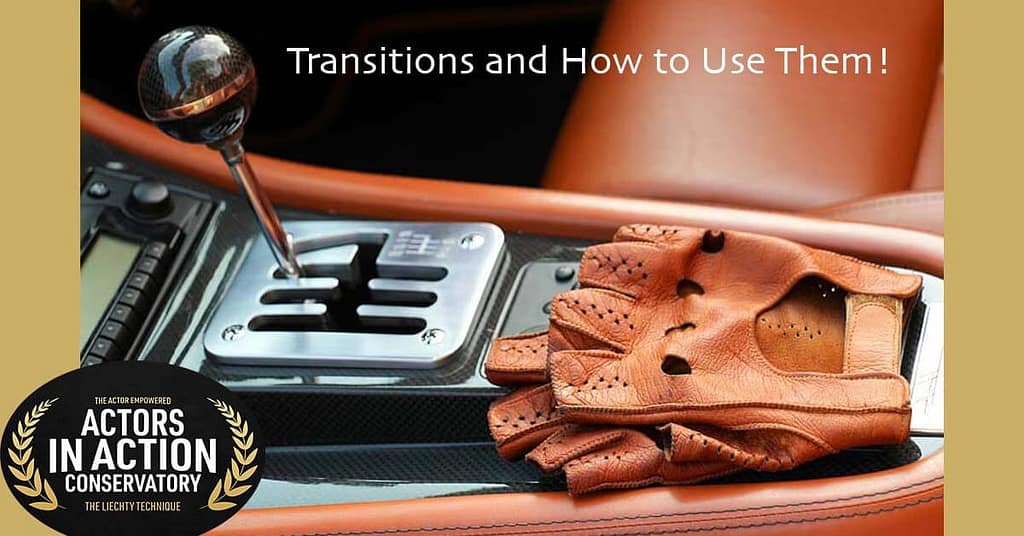Transitions and How to Use Them!
You’ve probably heard about transitions in acting but you may not know exactly what they are or when to use them. And you may not understand just how important they are.
Think of a transition as a shifting of gears. Some people call them beats or beat breaks. But basically what they do is move the scene along from one “subject” to the next. Like when you had to write an essay in high school and were instructed to make three points about the topic, one paragraph each. A transition is that new paragraph leading to the next point in your argument.
A well written scene will basically have a beginning, a middle and an end. The shifts between those sections are transitions. They are important for storytelling as they move the character along the path of discovery toward achieving their goal. The clearer you can make those transitions the better. That is why I highly recommend you make some kind of physical shift on each transition.
That could be turning your shoulders slightly, or leaning in a bit, or taking a step to the side. It doesn’t really matter what you do as long as it is connected to the logic of the scene, it is physical, and you do it with purpose.
Transitions help with that all important concept of LEVELS. We want levels in your acting so it’s not all one note. Great storytelling is never flat! It may seem like a really technical thing, purposely putting in physical transitions, but believe me it will read really well.
And as it’s hard to explain transitions just with writing about them, I have made a quick video about how to put them into the text you are working on. (See above.)
But before we dive into the video, let’s talk one more minute about transitions. You may be wondering, OK, so how do I find them? How do I know where and when to put in those breaks in the script?
That comes from careful reading of the scene or monologue. A transition or beat break will happen when there is some change. Again think of it as a change in conversation. One minute you’re talking about baseball and then suddenly someone starts talking about the picnic tomorrow.
So in your script analysis, notice what the scene is discussing at the very start. As you keep reading along there will be a change that happens, this will be your new “subject”. Right at the change is the transition. If you keep reading, pretty soon down the next page or so there will be another change, another transition.
I like to think of it this way—a beat break or a transition usually happens when:
New information is presented
The current Information is deepened
Something gets resolved
Something gets interrupted
So look through your script and see if you can find those places where things shift. Mark it with a line and start applying your physical transitions right at that break.
It will make a big difference. Practice it until you feel it’s second nature and try it at your next audition.
Let us know how it turns out! We’re sure you’ll become a fan of transitions as well.
To find out more about our training visit us at: www.actorsinactionconservatory.com

